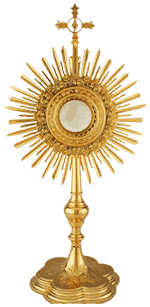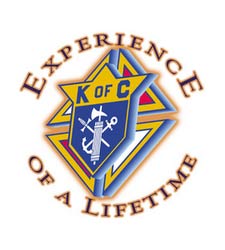The cross now standing in the back of our church (I hope it’s there as I write this!) is the culmination of nearly a year of work. As many of you know, cross now on the steeple lost an arm during Hurricane Gustav. When the arm came down, we found that it had been made of steel piping wrapped with cypress wood and covered with a copper flashing. Although certainly durable and well made, the cross didn’t have any great artistic value. When I arrived here on November 1, 2008 , one of the items on my desk was the insurance estimate for either repairing or replacing the cross in an amount of $30,000. In examining the estimate, I noticed that only about $500 was for the cross itself, and the rest of the money was for the labor and the crane. I thought: “why would we spend $30,000 to replace a simple $500 cross? Why can’t we put something more beautiful on top of our church? I posed that same question to a number of neighbors and parishioners. Enter Thomas Bruno. Thomas is a local artist who has done a number of sculptures for public display, including the bust of Father Harry Tompson, SJ at Good Shepherd School, a Madonna & Child at Our Lady of Perpetual Help in Kenner, and the eagle at the Hale Boggs District Court Building. Thomas contacted me, and we began to discuss what I had in mind for the steeple. I gave Thomas a copy of the original Favrot & Livaudais architectural drawings for the steeple which showed the original design of the cross. In our conversations, I grew to admire Tom’s passion for his work. He gave me a proposal, and I told him that I would try and raise the money. The next phase came through some simple bulletin articles and announcements at Mass whereby I invited people to become “Spirit Givers” by donating $1,000 with the promise of having their name on the cross. As some of the school children had said, the cross is “In the Name of the Father and of the Son and of the Holy.” The “Spirit” arm is missing! As you can see on the previous page, the reaction was an outpouring of generosity that helped it all to come together. And with that generosity came a second decision to spend extra money to cover the cross with gold leaf.
Of course, plans for construction always involve unexpected detours, and our plans have had their share! We had to make an unexpected “exploratory” crane trip to find out the condition of the top of the steeple. We had to get an engineer involved to determine the mounting. And we didn’t realize how incredibly time consuming it would be to hand engrave all of the names and lay on the gold leaf. The last detour resulted in our having to postpone the raising of the cross at the last minute due to fears that the sizing for the gold had not sufficiently cured.
The design for our cross has Irish or Celtic origins. Although legends abound that this style of cross was introduced in Ireland by St. Patrick in the 5th century to counter some sort of pagan symbol, there are many other theories about its origin. There is a possibility that the Celtic cross has its origins in the vision of the entwined Chi-Rho (the first two letters of Christ in Greek: XP) seen by the Emperor Constantine which began the legalization of Christianity in the Roman Empire. This symbol was widely circulated on coins in the 4th, 5th and 6th centuries. However, the connection is far from certain. Many experts believe that the circle served primarily as a means of providing structural strength to the arms which in Ireland were originally made of stone. The Christian meanings that are usually attached to the circle on the cross include the unity and eternity of God. Celtic crosses in Ireland were made as early as the 7th century, but ceased being produced after the 15th century until the Celtic Revival in the mid-1800’s. It’s possible that our cross was part of that Celtic Revival.
In terms of construction, our cross is made to last! It was cast by Thomas Bruno out of bronze, a material with remarkable durability. After grinding down the rough edges and some light polishing, the names of the “Spirit Givers” were hand engraved into the upright beam of the cross in a script engravers font that has its origin in the 17th century. After the names had been carved, the cross was covered in a primer so that the gold could be applied. On top of the primer was applied gold “sizing,” which then cures for 12 hours. After that, 4 inch square sheets of 23 karat gold leaf were applied by hand and joined to the sizing with a special brush. Although the gold leaf on the cross is expected to last up to 60 years (depending, of course, on weather conditions), it cannot be touched by the fingers, since the gold will damaged by the oil in our hands.
Finally, the last detail is the inscription, which is listed below. In keeping with tradition, it is written in Latin. Since we are “lifting up” the cross, we used the Scriptural quote about the “lifting up” of Jesus: “And just as Moses lifted up the serpent in the desert, so must the Son of Man be lifted up, so that everyone who believes in him may have eternal life.” (Jn 3:14-15) The second part indicates that the cross is being blessed on the Solemnity of Christ the King. DNIC is an abbreviation for Domini Nostri Jesu Christi – “of Our Lord Jesus Christ,” and Regis Universorum is “Universal King.” The third part is the name of the Archbishop and the Pastor (P.P. for parochus or parish priest) at the time of the blessing.
Ita exaltari
oportet Filium
hominis (Io 3,14)
In sollemnitate D.N.I.C.
Universorum Regis
A.D. MMIX
Gregorius M. Aymond
Archiepiscopus
C.H. Nalty, P.P.




